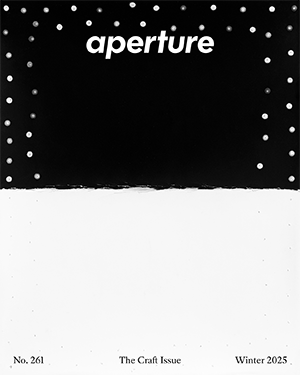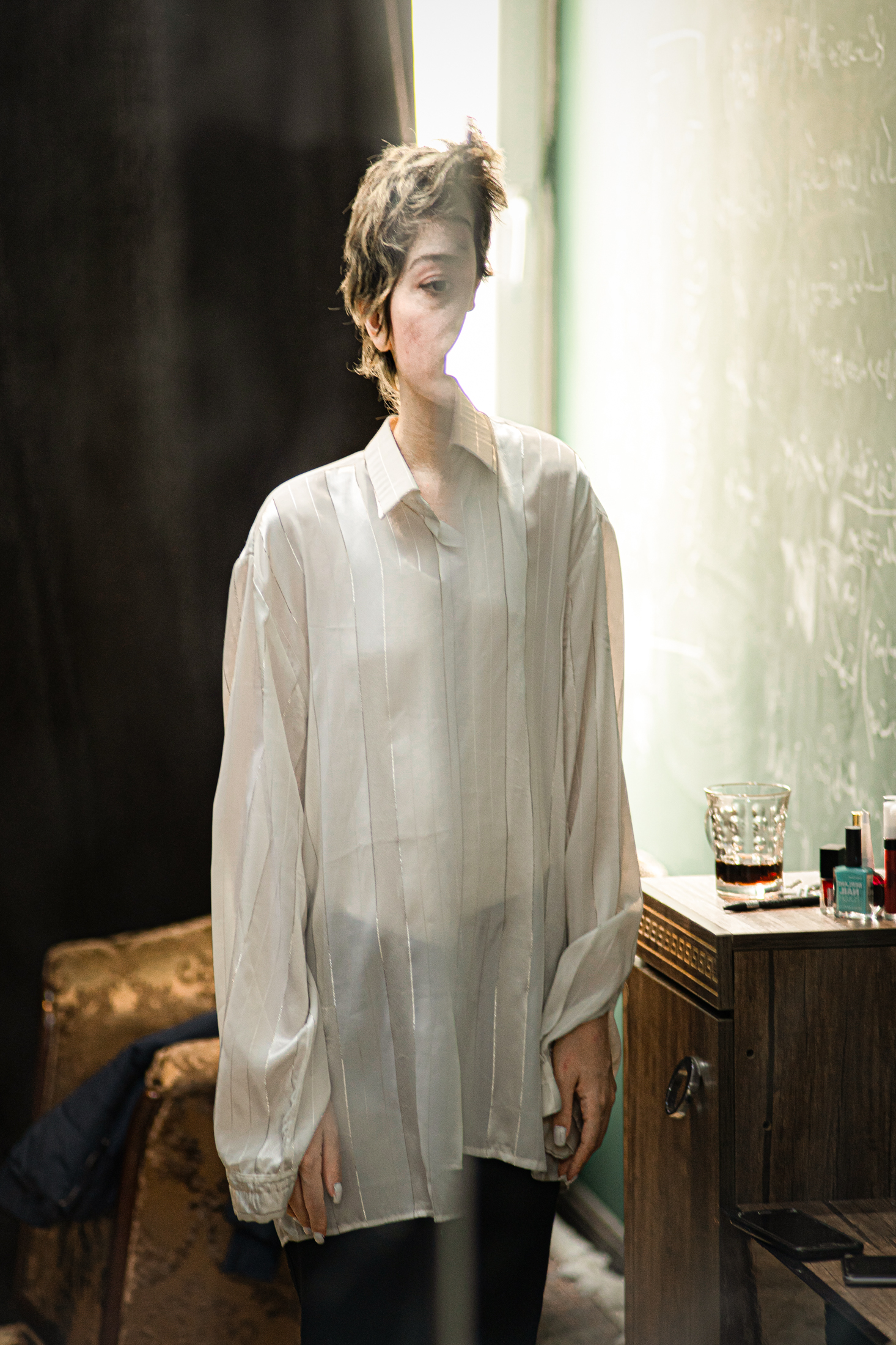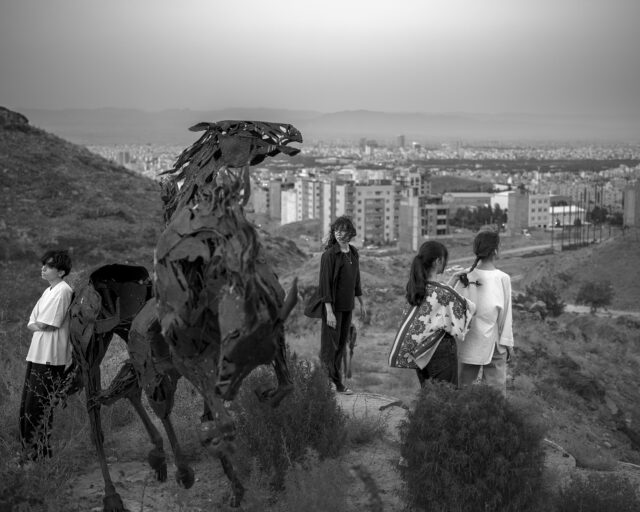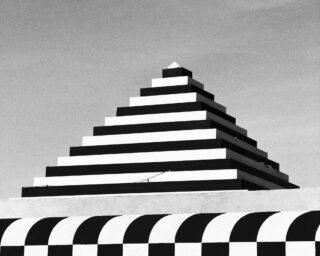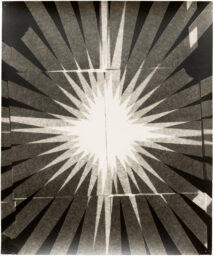Zahra Motallebi, Untitled, 2021, from the series Disorders
Over the last century, photography in Iran has often been overshadowed by the country’s social and political conditions and historic flash points—among them the transition from the Qajar to the Pahlavi era in the 1920s, the Islamic Revolution in the late 1970s, and the Iran–Iraq War the following decade. As a result, many photographers, particularly those from the new generation who transcend geographical confines, have received relatively little recognition.
In countries where the art scene has attained a certain level of prosperity, there is a dynamic relationship between artists, curators, historians, and institutions. These elements collaborate to set the cycle in motion: the artist generates a piece of work, and curators exhibit these works in galleries and museums to explore new ideas. As a result, the artist’s work garners visibility, curators unearth innovative concepts, history advances, and ultimately, museums and galleries manage the economic aspects of this process. But young Iranian photographers encounter a distinct set of issues once they progress beyond the political imaginary.
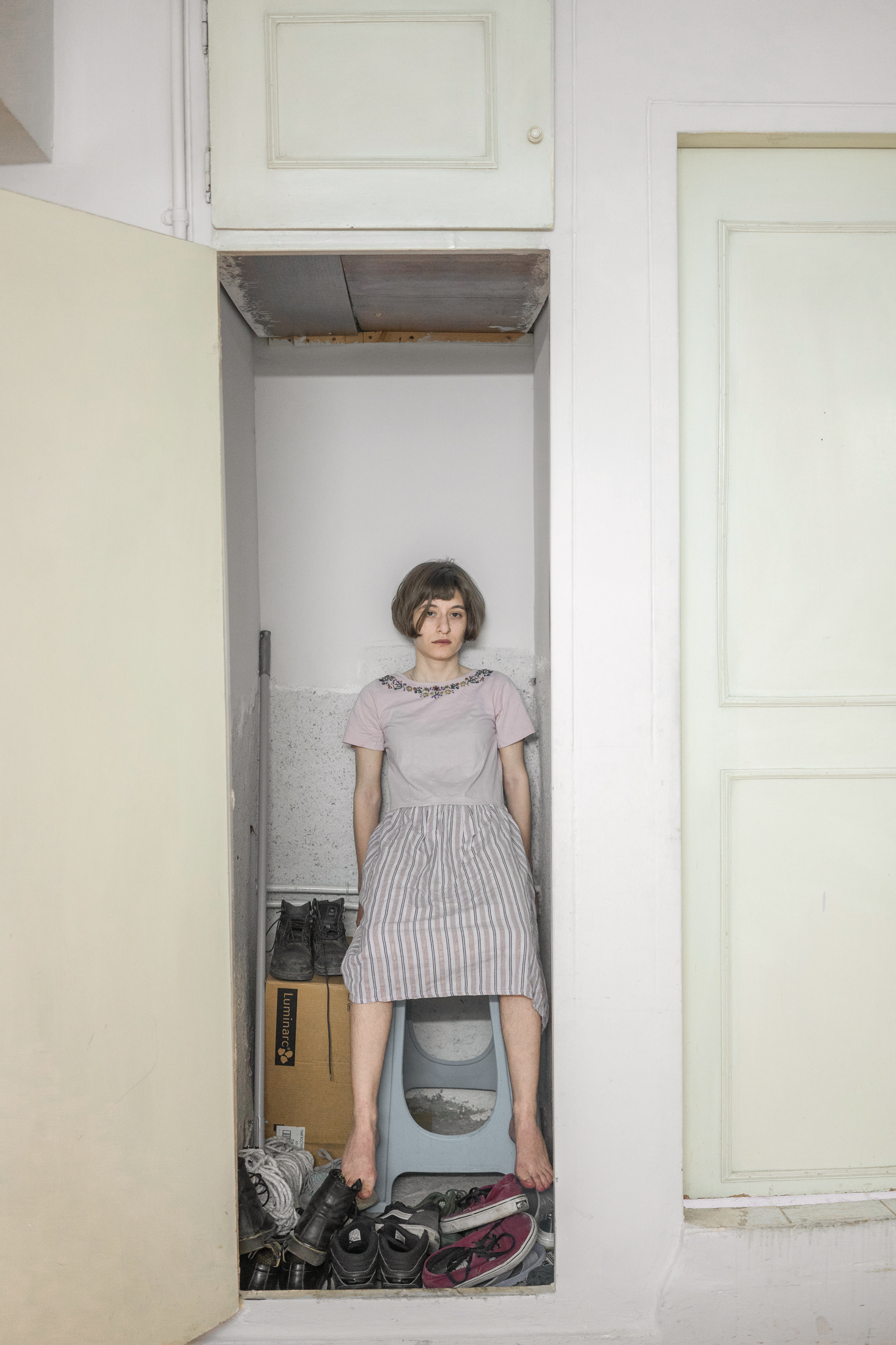

While the significance of photography has only recently grown due to the establishment of photography faculties within Iran’s universities, the absence of curators is a notable void. The lack of curators renders the interaction between artists and galleries both more challenging and complicated. This poses a significant issue for those striving to display and showcase their artworks. Consequently, we are observing a static environment wherein photographers’ most fundamental requirements, namely sales and exposure, remain unfulfilled.
I recently spoke with three young photographers about their practices: Zahra Motallebi, a twenty-five-year-old photography student at Tehran University of Art who focuses on gender minorities in Iran and who has been documenting her personal journey after the loss of her mother; Ehsan Noortaqani, twenty-six, who studied at Art University of Isfahan and finds photographic inspiration in his family, particularly after the passing of his father; and Zhoobin Abdiani, a twenty-eight-year-old photography student at the University of Tehran whose work draws on his birthplace in Kurdistan.

Amin Yousefi: During the late 1990s and early 2000s, being an Iranian photographer required a series of visual elements that functioned as legitimizing indicators when emerging in the art scene. Those components, such as explorations of identity, masculinity, the evolving role of contemporary Iranian women in a male-dominated society, and depictions of the country’s social conditions, were prominent in most visual depictions. Recently, they have become more implicit, requiring some decoding at times. Do you believe that these elements exist in your work? Would you like to incorporate these elements intentionally?
Zhoobin Abdiani: I believe it should be present. Speaking from my own project, let’s consider the landscape in Kurdistan, Iran, compared to the landscape around London. As a landscape photographer working in Kurdistan, I cannot simply overlook its Iranian essence. However, I don’t approach it from an exotic perspective. In my work, I capture concepts and objects that have undergone a historical process within the landscape, yet they hold their own distinct identity within Iran. From this perspective, I strongly believe that these elements should exist, be given priority, and be emphasized.
Zahra Motallebi: I find myself unintentionally engaged in this matter, even if I may not be particularly interested in being labeled solely as an Iranian photographer. However, others argue that it is important to acknowledge that these images were captured within a specific geographic context like Iran. For instance, when I photograph gender minorities, the appeal stems from my connection with those individuals. Yet, I soon find that I am being criticized for focusing on what was considered an exotic subject matter! Despite this, the project holds great personal significance for me, as my curiosity lies with these minority groups.
Ehsan Noortaqani: Perhaps I’m not the best person to answer this question, as those observing me and my work from an external perspective can make that judgment. However, personally, I don’t dwell on whether I should be classified as an Iranian photographer while creating my projects and shaping the photos. What truly concerns me is that the artistic aspect of Iranian photographers’ works is often overlooked. There always seem to be other factors at play when interpreting the works of Iranian artists, which I find bothersome.

Yousefi: Where do your projects begin and how does photography enable you to explore and expand your ideas?
Abdiani: I have always had a curious and research-based mindset, and I found that snapshot photography wasn’t quite suitable for me. While I do some experiments with photography at the start of a project, the point of my work has consistently revolved around the themes of identity and the Kurdistan region. These aspects are clearly reflected in my works. For me, photography is nothing more than a medium to execute my projects, and I am not always faithful to it. I prefer to follow conceptual artists and utilize photography as a documentation tool.
Noortaqani: My projects are deeply personal and originate from my memories and the insecurities that make me feel vulnerable. The catalyst for my photography journey was actually the passing of my father. The criticisms directed toward me, suggesting that I lacked responsibility, served as a starting point for me to prove the opposite through photography.
Motallebi: For me, it stems from curiosity and the desire to immerse myself in and understand the subjects that intrigue me. However, this process manifests in different ways across various projects. Take, for instance, photographing my mother before she passed away. I harbored a profound fear that she might have an incurable illness, and that she might not be alive for much longer—each photo I took of her could potentially be the last. Emotionally, I felt compelled to capture countless images of my mother, ensuring I wouldn’t forget her face once she was gone. But as the project progressed, and this sentiment intensified, I began approaching the subject of my mother with a more raw and unflinching perspective. She had become, in a way, my own personal subject (thing) till she passed away.


Yousefi: And what are these pictures for? I’m curious to understand the intention behind your photography.
Abdiani: I try to research my topic before starting the project. From reading books and articles to field research, I try to understand my topic and diagnose it for myself. These aspects may not be directly visible in my project, but they are definitely tangible. In the project I am currently working on, on the Zrêbar Lake, I even had to speak with a geologist to find out the reasons for the presence of rocks that are foreign to this geography. Zrêbar Lake is one of the largest freshwater lakes in the world. No water enters it, and its water is supplied from the springs at its bottom. Additionally, it supports 151 species of animals in its wildlife. However, this lake has been destroyed in recent decades due to the accumulation of a significant amount of garbage at its bottom. I must admit that this part of the research is much more enjoyable for me than the production of photographs itself because, more than anything else, it increases my knowledge of my surroundings. In general, these things in the landscape are very interesting to me, and I strive to learn more about them even if I’m not working on a project related to them.
Motallebi: Photography serves as a reliable friend and companion for me to explore my curiosities. What photography provides me with is precisely that fleeting sense of satisfaction or jouissance, as mentioned by Lacan. It allows me to immerse myself in spaces that evoke this feeling within me, offering that momentary sense of gratification.
Noortaqani: You know, photography just makes me feel good at times. I believe there’s both an internal and external aspect to it. Unlike Zahra, I turned to photography when I was eighteen, following my father’s passing. Experiencing the sudden loss of my father, who I saw in the morning and who was gone by the afternoon, made me value our time even more. While Zahra discovered the significance of capturing moments before her mother’s death, I had a similar realization after my father’s passing. This has gradually emphasized the importance of the people around me in my life, day by day.
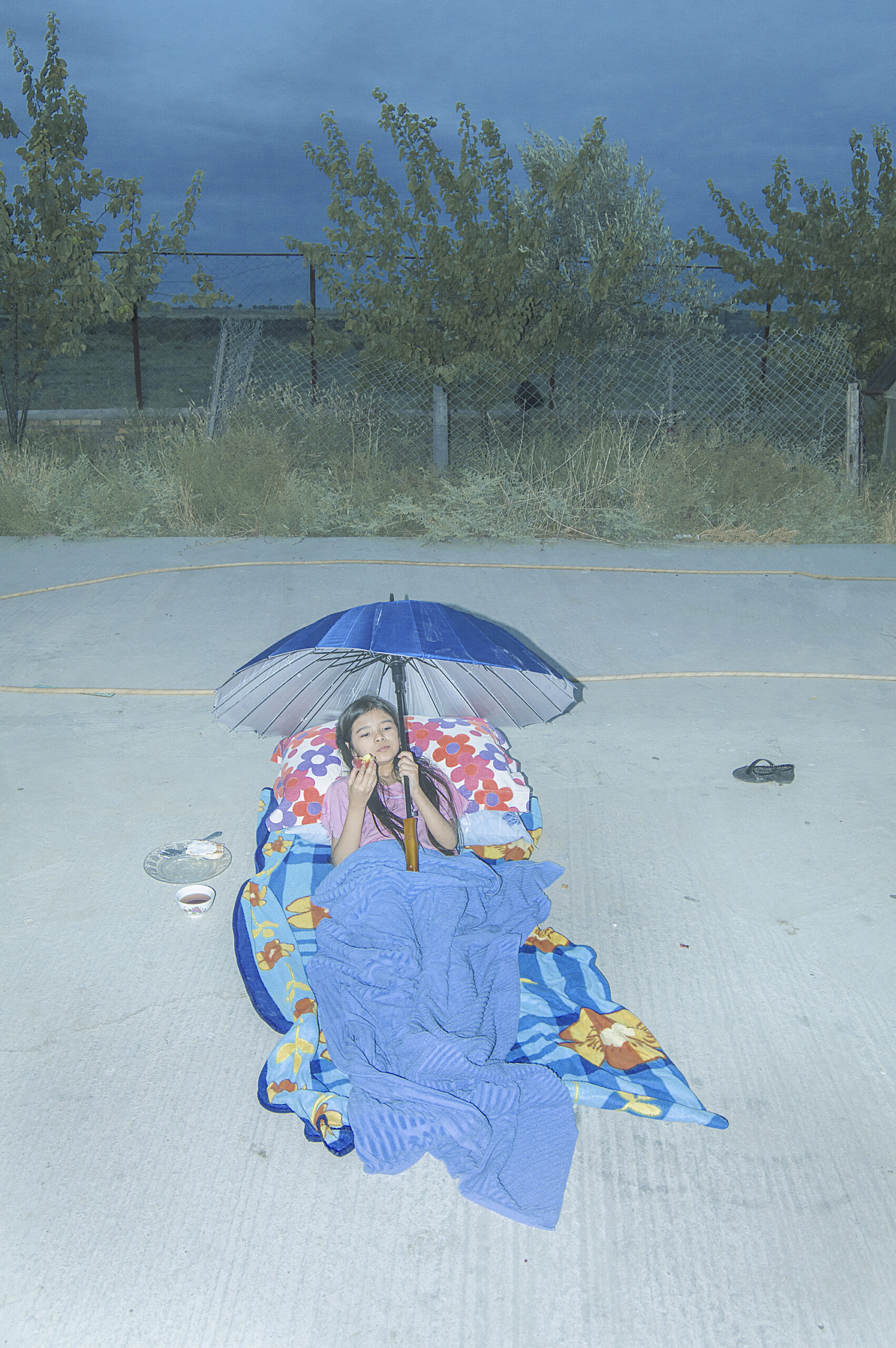
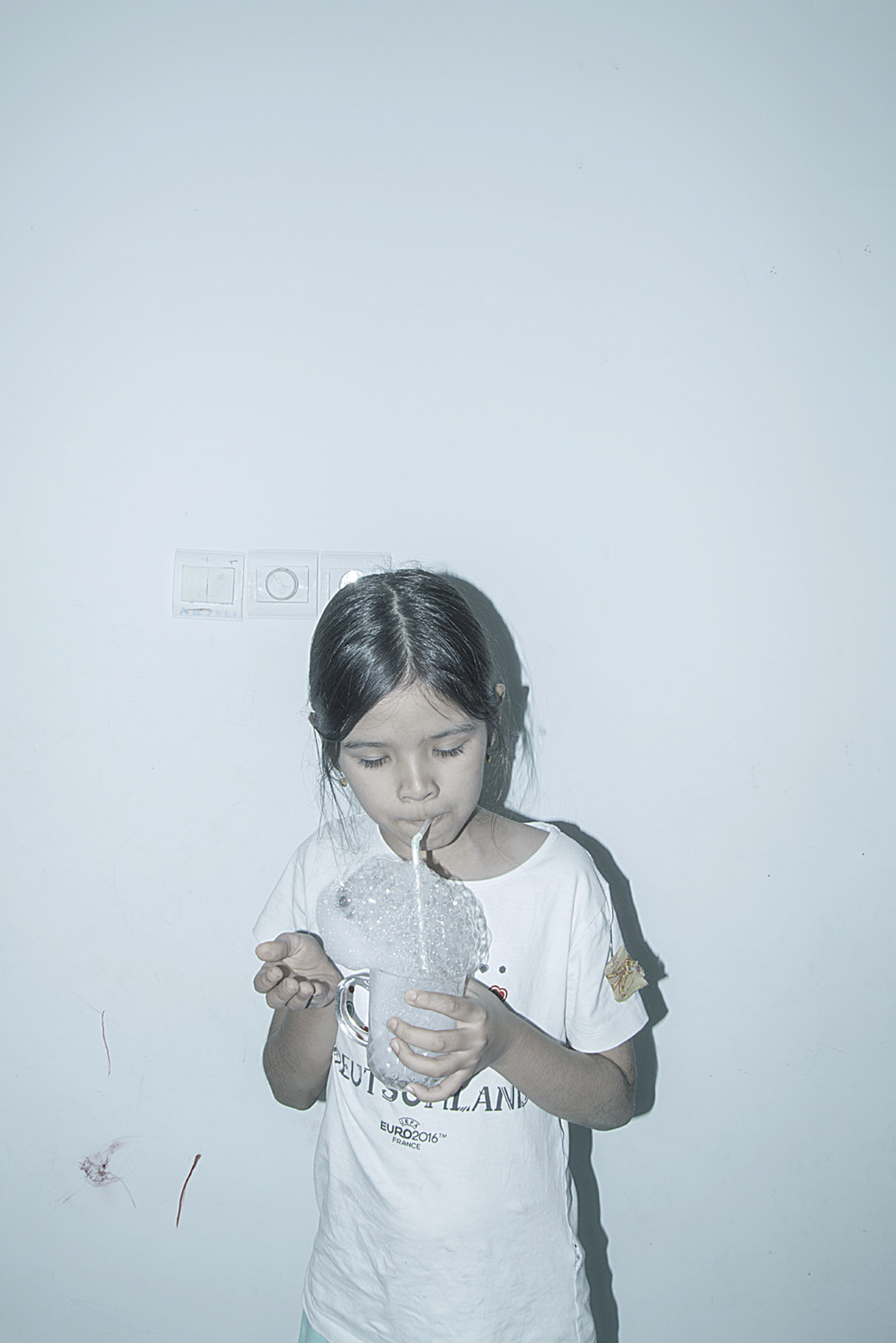
Yousefi: Has the Woman, Life, Freedom movement in Iran inspired you to create a project in response, even though you are not a photojournalist? I think you have the potential to respond to the situation around you through your practice.
Abdiani: No. While it is a concern shared by many, creating a project directly addressing such events is not my preferred style. Even though tackling these subjects may bring fame, I still prefer to maintain my own political approach in my work. Moreover, it surprises me that some say that addressing the landscape is not political. I think that dealing with land and landscape is quite political nowadays because humans are trying to destroy it more than ever. Art history serves as a guiding framework for me. For example, the painting The Third of May 1808 (1814) by Goya, in my opinion, is as much about the killing as it is about the land where these events take place, and it is present in the painting.
Noortaqani: I never engage in [political movements], especially during times of crisis. While there may be implicit criticisms within my work, I believe that making accurate judgments in such moments is difficult. I see it as a form of exploiting the situation, and I prefer not to partake in it directly.
Motallebi: Well, as a woman in Iran, I have always experienced these conditions firsthand. However, I have always detested the idea of exploiting these circumstances or using them directly in my work for personal gain. Directly engaging with them would seem to imply that I have accepted these dreadful conditions, which is something I am not willing to do.
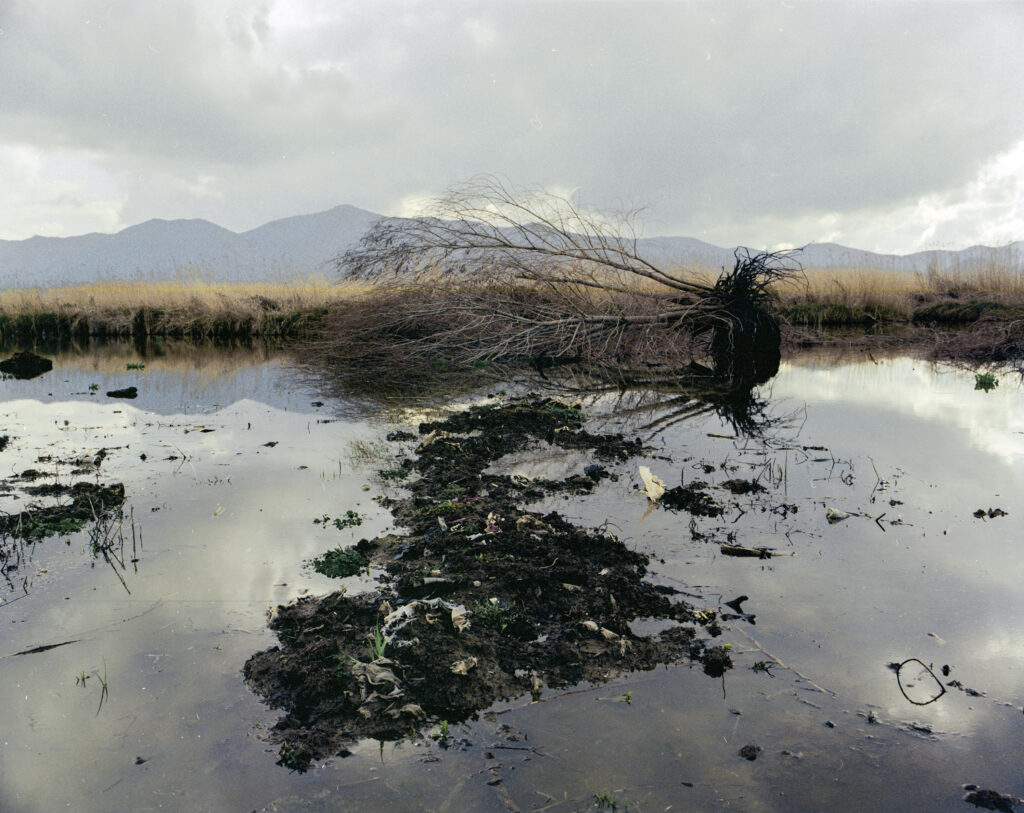
Yousefi: As representatives from three esteemed art institutions in Iran, I am curious to know what influences you, beyond your academic backgrounds. What things or individuals have had an impact on your artistic journey?
Abdiani: There are several photographers I could mention, such as Mehran Mohajer in Iran and Dusseldorf-based photographers like Bernd and Hilla Becher or Thomas Ruff. However, apart from them, the Minimalists and their straightforward approach to materials have had a significant influence on me.
Noortaqani: I have also been influenced by filmmakers like Nuri Bilge Ceylan and artists such as Julian Schnabel. Additionally, Iranian artists like Mohammad Shirvani and even Khosrow Hassanzadeh, who we recently lost, have left a lasting impact on me. And, of course, I cannot forget the influence of Japanese photographers as well.
Motallebi: Antoine d’Agata helped me to think about collaboration with the models in my photographs. I aim to capture their facial expressions, body language, and poses according to my vision. It is about creating a belief in the person being photographed that I possess the ability to depict them as sad, in a bad mood, infatuated, defeated, or weak. I want to portray them as if they were observing themselves from a distance during unfortunate moments of their lives, like in solitary moments, when they are sitting alone in their house or room, and their dark side is revealed. This realization was further reinforced by the works of filmmakers such as Gaspar Noé, Lars von Trier, and Yorgos Lanthimos. Recently, while I was writing down all my thoughts on photography for my MA thesis, I became interested in the works of Sadegh Tirafkan. In fact, he had the courage and audacity to showcase something that no one could do at that time. To me, he was confronting himself. The symbolic identity apparent in his works remains a mystery to me. When I observe his self-portraits, it is not easy to understand his approach. It seems he explores masculinity from a feminine perspective, or perhaps the other way around. It’s as if his identity, sexuality, and history are intricately intertwined in his works.
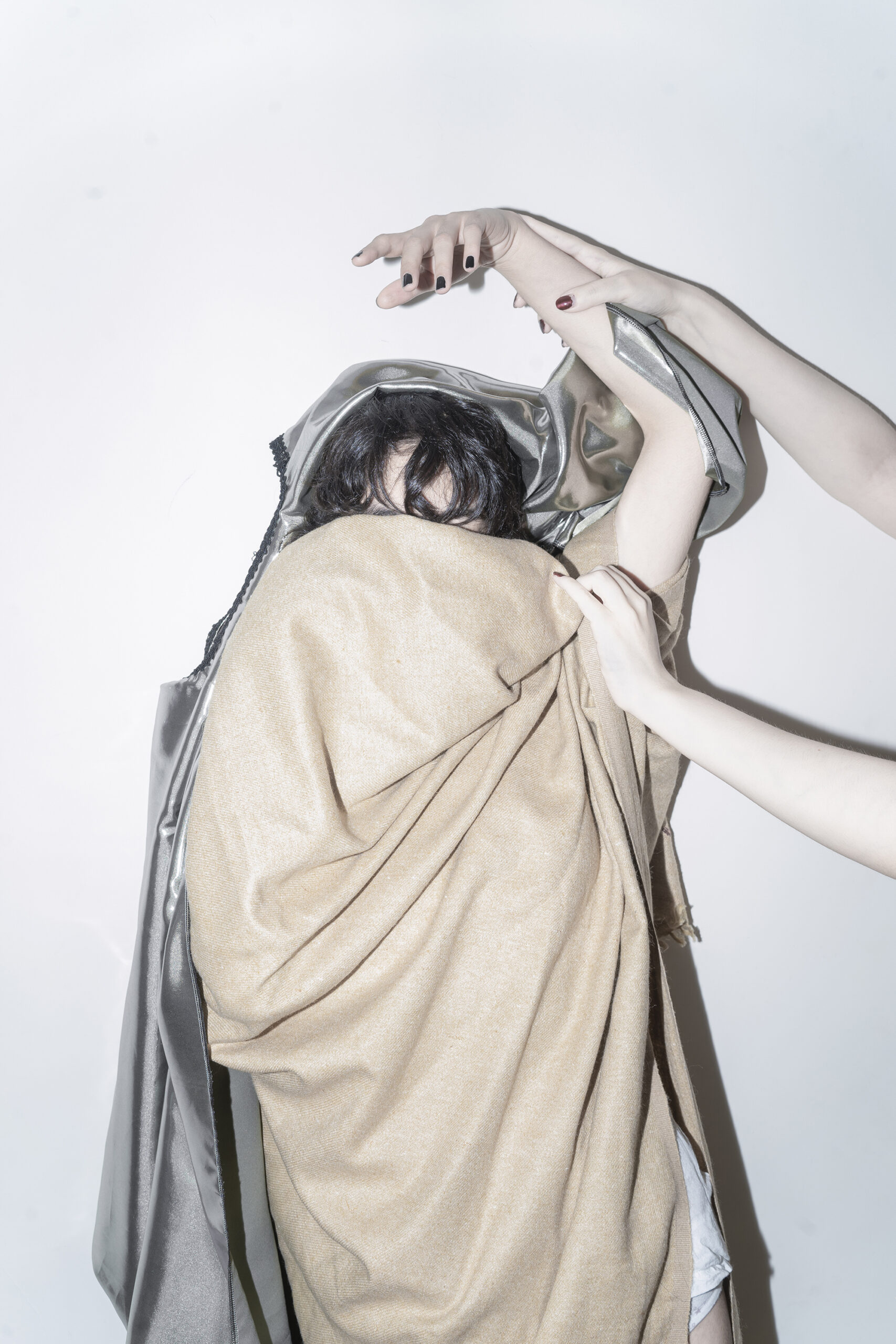

Yousefi: How do you typically showcase your works? What options are available in Iran, and what are your aspirations or ideals in terms of presenting your art?
Abdiani: It varies depending on the project, but personally, I have a keen interest in exhibitions, whether they take place within gallery spaces or outside of them. Unfortunately, organizing an exhibition in Iran can be quite challenging, particularly for our generation. Galleries do not readily provide exhibition opportunities for the younger generation who aspires to have their first solo exhibition, and this poses a significant problem. I totally support and agree with alternative methods of presentation, but this also has challenges in Iran due to economic and sociopolitical conditions.
I am interested in exhibiting because I believe it is the way projects are seen in Iran. While alternative methods may have their audience in Europe or the United States, in Iran, they are still in their early stages. For me, showcasing a project in a gallery holds greater importance than anything else, as it provides an opportunity for critique and discussion.
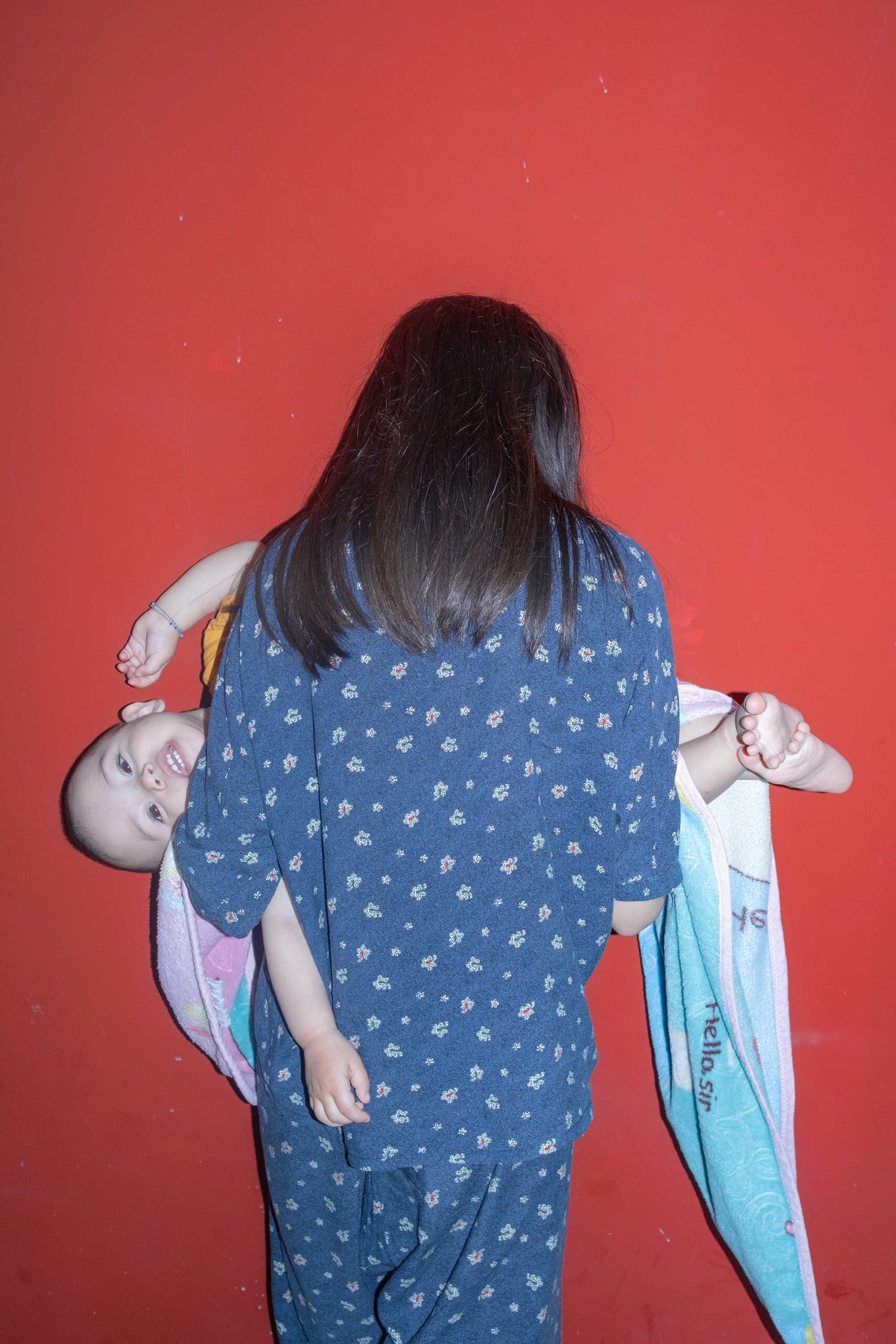
All photographs courtesy the artists
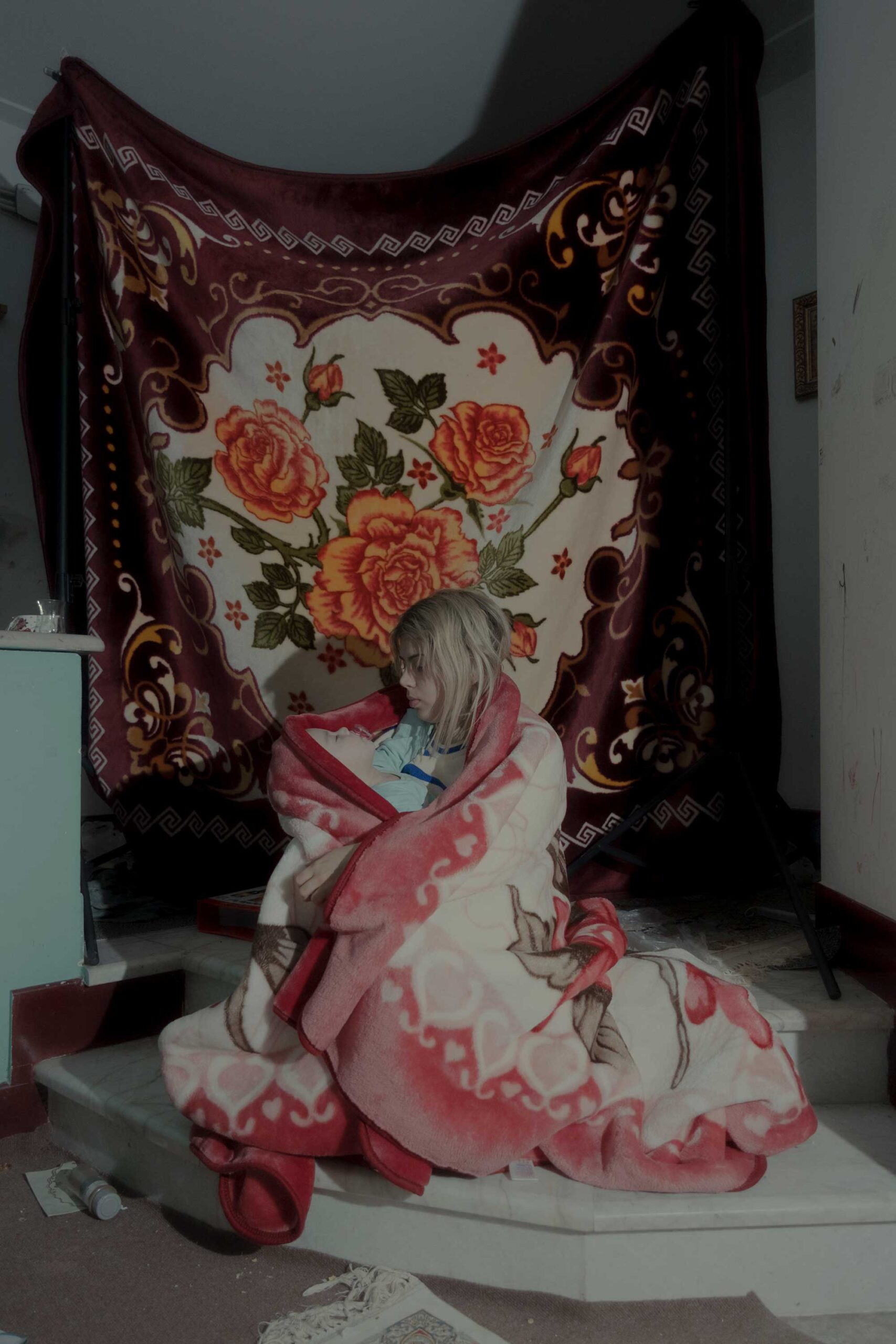
Noortaqani: Most of my projects have been created with the desire to be featured in a photobook due to the timeline or sequence that has always been present in my work. When you look at my work, you notice the passage of time, the growth of people, and the changes in things and my family. I have been photographing them for many years, and this timeline is what interests me in creating a photobook. I believe photobooks can effectively depict the progression of time. In the end, my ideal is to make money from what I’m doing. However, I’m facing a dilemma due to the economic aspects of photography. Making money as a photographer poses challenges that I’m currently dealing with. The balance between pursuing passion and making a sustainable income requires careful consideration. For instance, I must admit that in recent years, due to being focused on my project, I haven’t tried to exhibit or sell my work, either in a gallery or as a photobook. This hesitance has also resulted from a combination of reasons, including lack of self-confidence and uncertainty about the right approach.
Yousefi: Yes, I have experienced the same issues, and I fully understand how challenging these situations can be.
Motallebi: I believe the role of photography curators is highly significant, particularly for artists like me whose works are made based on their practice, not on a specific project. While I have a certain awareness of my role in creating work, I think there should be individuals like curators who can effectively manage the presentation of works. Their absence is deeply felt in Iran.
